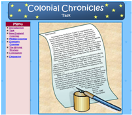Over the past few months, I have been more aware of my social learning network--and I'm amazed to see how much it has grown. It's been about 1 1/2 since I started my blog and setup my feed reader, but I've never used them as effectively as I have over the past several months. I feel more connected with educators from around the world (even though I'm still shy about posting comments and tweeting), began to look at technology integration from multiple perspectives, and learned how to easily find answers to my question. Participating in a social learning network has helped me to stay up-to-date with best practices and the newest research.
I still have lots of room to grow, however. I'd like to spend the next few months becoming a better twitter user. I'm always amazed when I see other teachers sending out a tweet asking for others to provide resources or take time to read & respond to student work. Within a few moments, they receive the support they needed. However, I know building that type of strong network takes time and persistence. In other words, I need to start giving before I can receive (and I think my 1 and only tweet won't cut it).
As I continue to improve my PLN, I'm thinking more and more about how I can help my students develop and grow from a learning network. One of the key reasons I learn and grow so much as I read blogs, explore Diigo bookmarks, and skim tweets is that I am personally interested in the topics. I am usually seeking out the information because I want to know, not because somebody is telling me to do so. Will the fact that I'll be requiring my students to post on a discussion board or research a specific topic limit the power of their network? Will they have to wait until they are older (and can have more freedom online) before they see the true learning potential of the web? How do I balance developing social skills online with digging deeper into concepts? Clearly, I'm still a little uncertain about how social learning networks can be incorporated into K-12 schools.
Labels: insys 497
Using Shelfari to Create Authentic Book Discussions
Posted by Carrie Mitton on Monday, December 8, 2008
This week I'll be teaching my students how to find, discuss, and review books on Shelfari.com. Some of my students helped create the video introduction (see above) by recording the narration. I used this video to kick-off the Shelfari project.
Today, I sent home the parent permission form and student agreement contract. In order for students to participate in Shelfari, they must return these forms.
If you're interested in using Shelfari with your readers, here the resources I created for this project (including my lesson plan):
Labels: insys 497, read-write web, research
Lesson Planning & Implementation (Blog Response #4)
Posted by Carrie Mitton on Thursday, December 4, 2008 I recently read a really fascinating article in The Reading Teacher called “Literacy Instruction With Digital and Media Technologies” by Diane Barone and Todd Wright that discussed how blended classrooms can engage our students (you’ll need to be a member of The Reading Teacher in order to read it). In the article, the authors cite 3 key ideas that teachers must remember:
I recently read a really fascinating article in The Reading Teacher called “Literacy Instruction With Digital and Media Technologies” by Diane Barone and Todd Wright that discussed how blended classrooms can engage our students (you’ll need to be a member of The Reading Teacher in order to read it). In the article, the authors cite 3 key ideas that teachers must remember:
“1. Simply using software programs on computers does not prepare students for new literacies’ expectations.
2. New literacies are deictic in that they constantly change and require teachers to embrace these changes.
3. New literacies are essential in classrooms so that equal opportunities are offered to all students.”
Just after I read the article, I cotaught a lesson with the library/media specialist in the computer lab. During this lesson, she wanted the students to locate information on World Book Online in order to answer questions. About half way through the period, she came over to me and asked, “Why do all the students think they can type the whole question into search box instead of the key words?” That basic question reminded me that simply using technology is not enough to develop literacy skills. The students need direct instruction, modeling, and support strategies for identifying key words, selecting a search result, and skimming the text. The lesson had a decent foundation, but our implementation needed improvement.
What was even more striking to me was that fact that we had just finished a key word search unit in connection with our science fair research. Just like every other skill the students learn in school, once is not enough. We need to teach, reteach, confer, model, and repeat until new literacy skills become second nature to the students.
It will take a lot of work—but I’m excited for the direction we’re heading in. Now if only I could teach in a one-to-one laptop classroom like the teacher in the article and the Floydada Independent School District do!

Labels: digital literacy, insys 497, read-write web




